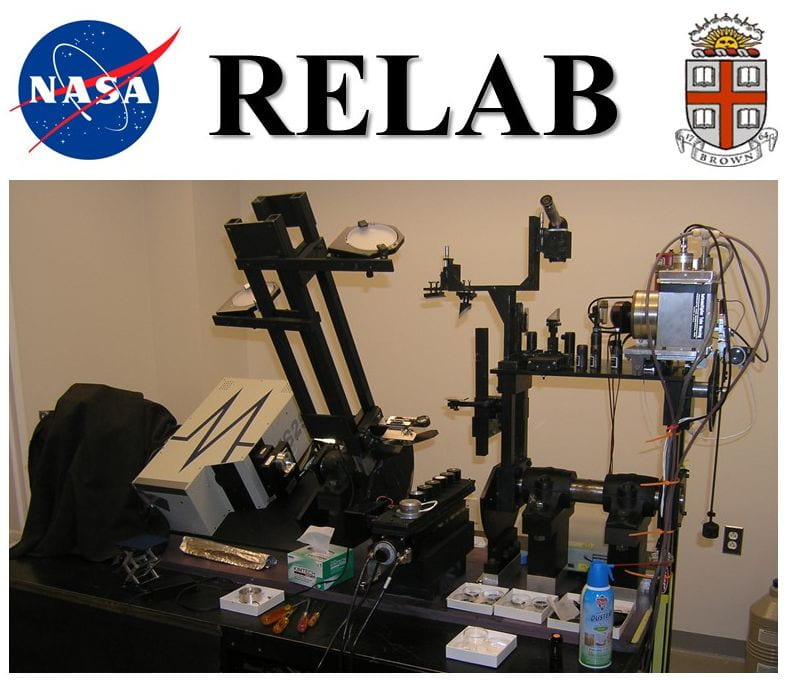Spectroscopic data acquired in the laboratory provide the interpretive foundation upon which compositional information about unexplored or un-sampled planetary surfaces is derived from remotely obtained reflectance spectra. The NASA RELAB is supported by NASA as a multi-user spectroscopy facility, and laboratory time can be made available at no charge to investigators who are in funded NASA programs.
RELAB has two operational spectrometers available to NASA scientists:
1) a near-ultraviolet, visible, and near-infrared bidirectional spectrometer
2) a near-, mid-, and far-infrared FT-IR spectrometer.
The overall purpose of the design and operation of the RELAB bidirectional spectrometer is to obtain high precision, high spectral resolution, bidirectional reflectance spectra of earth and planetary materials. One of the key elements of its design is the ability to measure samples using viewing geometries specified by the user. This allows investigators to simulate the geometry of natural observing conditions for particulate samples as small as 10 mg.
Use and scheduling of the RELAB is monitored by a 4-member advisory committee. NASA investigators should direct inquiries to the Science Manager (ralph_milliken@brown.edu) or RELAB Operator (takahiro_hiroi@brown.edu).
Reflectance Experiment Laboratory, Brown University, Box 1846 (or 324 Brook Street), Providence, RI 02912, USA.
